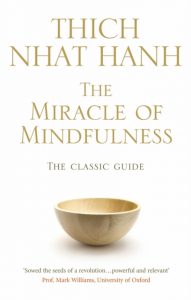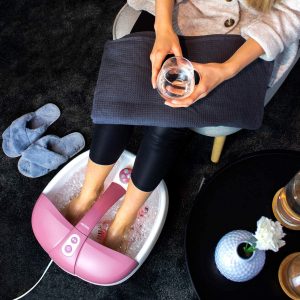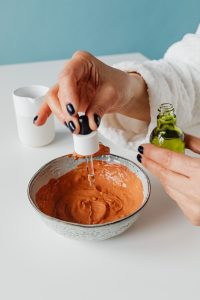Definition of massage therapy
Massage therapy is a form of holistic health care that involves the use of touch to manipulate the soft tissues of the body. It has been practiced for centuries as a way to promote relaxation, reduce stress, and alleviate pain. In recent years, the benefits of massage therapy have been recognized and supported by scientific research. From reducing muscle tension to improving sleep and boosting the immune system, massage therapy offers a wide range of physical and mental health benefits. In this post, we will take a closer look at massage therapy, including the different types of massage, the benefits of receiving regular massages, and how to choose a massage therapist. Whether you are looking to relax and de-stress or seeking relief from chronic pain, massage therapy may be a beneficial treatment option for you.
Overview of the different types of massage
- Swedish massage: This is the most common type of massage and involves the use of long, flowing strokes to relax the entire body. It is a gentle massage that is designed to promote relaxation and improve circulation.
- Deep tissue massage: This type of massage uses more pressure and targets the deeper layers of muscle and connective tissue. It is often used to alleviate muscle tension and pain.
- Hot stone massage: In this type of massage, smooth, heated stones are placed on the body to relax tight muscles and promote deep relaxation.
- Thai massage: This type of massage involves a combination of stretching, pressing, and rocking movements, and is typically performed on a mat on the floor. It is designed to improve flexibility and relaxation.
- Shiatsu massage: This Japanese massage technique uses finger pressure on specific areas of the body to promote relaxation and improve overall well-being.
- Sports massage: This type of massage is designed to help athletes recover from and prevent injuries. It can be used before, during, or after a sporting event.
- Aromatherapy massage: This type of massage involves the use of essential oils to promote relaxation and improve overall well-being.
- Reflexology: This type of massage involves the application of pressure to specific points on the feet, hands, and ears to stimulate the body’s natural healing processes.
Origins and evolution of massage therapy
The origins of massage therapy can be traced back thousands of years to ancient civilizations in China, Egypt, and India. In these cultures, massage was used as a natural form of healing and a way to promote relaxation and reduce stress.
The earliest recorded evidence of massage therapy comes from ancient China, where it was an important part of traditional Chinese medicine. Massage was also widely practiced in ancient Egypt, where it was used to treat a variety of ailments. In ancient India, massage was an integral part of the Ayurvedic healing system, which is still practiced today.
As civilizations developed and traded with one another, massage therapy spread to other parts of the world. It continued to be used for a variety of purposes, including as a form of medical treatment, a way to promote relaxation and well-being, and a means of preparing the body for physical activity.
The evolution of massage therapy over time has been influenced by a variety of factors, including cultural and medical developments, advances in technology and understanding of the body, and changing societal attitudes towards health and wellness. In the 19th and early 20th centuries, massage therapy experienced a resurgence in popularity, particularly in the United States. This was due in part to the influence of Swedish massage pioneer Per Henrik Ling, who developed a system of massage that was widely taught and practiced.
Today, massage therapy is widely recognized and practiced as a natural and effective form of health care. It is used to treat a variety of physical and mental health conditions, and is often integrated into a person’s overall health and wellness plan. The evolution of massage therapy continues to be influenced by advances in technology and understanding of the body, as well as changing societal attitudes towards health and wellness
physical and mental Benefits of massage therapy
The physical benefits of massage therapy:
- Reduced muscle tension and pain
- Improved circulation
- Increased flexibility and range of motion
- Boosted immune system function
- Improved digestion
- Lower blood pressure
The mental benefits of massage therapy:
- Reduced stress and anxiety
- Improved mood
- Increased relaxation
- Enhanced mental clarity and focus
- Improved sleep
- Increased feelings of well-being
How to prepare for a massage
- Choose the right massage therapist: It is important to choose a massage therapist who is trained, experienced, and who you feel comfortable with. Ask for recommendations from friends, family, or your healthcare provider, and don’t be afraid to ask the therapist about their qualifications and experience.
- Discuss your needs and preferences with the therapist: Before your massage, be sure to communicate any specific concerns or areas of the body you would like the therapist to focus on. This will help the therapist tailor the massage to your individual needs and preferences.
- Arrive at the appointment on time: It is important to arrive on time for your massage so that you can fully relax and get the most out of your treatment. If you are running late, be sure to call the spa or therapist and let them know.
- Wear comfortable clothing: It is a good idea to wear comfortable, loose-fitting clothing to your massage. This will allow the therapist to easily access the areas of the body being worked on.
- Eat a light meal before your massage: It is generally recommended to eat a light meal before your massage to ensure you are comfortable during the treatment. Avoid heavy, greasy foods that may leave you feeling sluggish.
- Stay hydrated: It is important to drink plenty of water before and after your massage to help flush toxins from your body and promote healing.
- Turn off your phone: Be sure to turn off your phone or put it on silent mode during your massage so that you can fully relax and unwind.
Tips for getting the most out of your massage
- Communicate with the therapist: Don’t be afraid to let the therapist know if the pressure is too light or too deep, or if you have any discomfort. It is important to feel comfortable and relaxed during your massage.
- Stay hydrated: Drink plenty of water before and after your massage to help flush toxins from your body and promote healing.
- Take it easy after the massage: Give yourself time to relax and unwind after your massage. Avoid engaging in any strenuous activities or making any major decisions right after your treatment.
- Follow the therapist’s recommendations: If the therapist recommends certain stretches or self-care techniques to do at home, be sure to follow their advice to help maintain the benefits of the massage.
- Consider the frequency of your massages: Depending on your needs and goals, you may want to consider getting massages on a regular basis. Some people find that weekly or monthly massages are beneficial for stress management and overall well-being, while others may only need a massage every few months.
- Explore different types of massage: There are many different types of massage, and what works for one person may not work for another. Be open to trying different techniques to see what works best for you.
let’s Recap what are the benefits of massage therapy
Massage therapy is a natural and effective form of health care that offers a wide range of physical and mental benefits. It can reduce muscle tension and pain, improve mood, and promote relaxation. It can also be an important part of a person’s overall health and wellness plan. To get the most out of massage therapy, it is important to choose a qualified and experienced massage therapist and communicate your needs and preferences. There are many different types of massage to choose from, and it can be helpful to try out different techniques to find what works best for you. Massage therapy is a great way to promote relaxation, reduce stress, and improve overall well-being. If you have never tried it before, we encourage you to give it a try and see the benefits for yourself.







